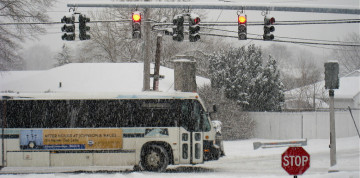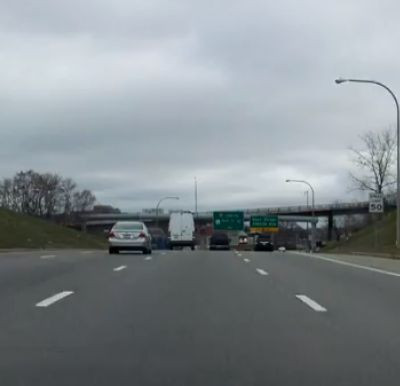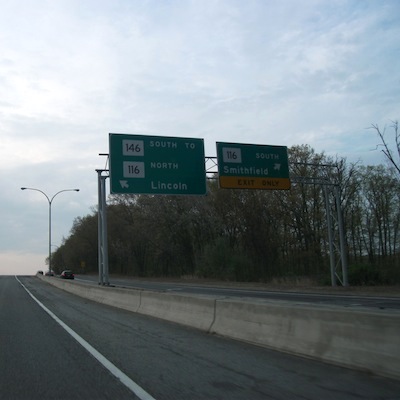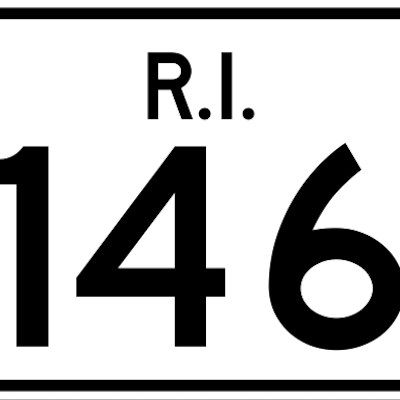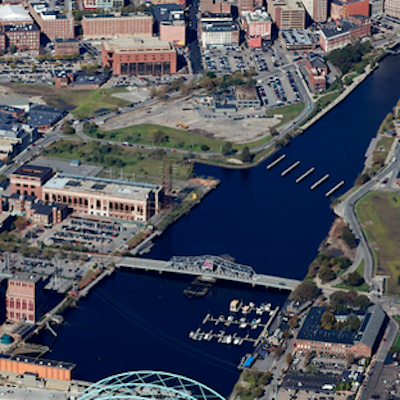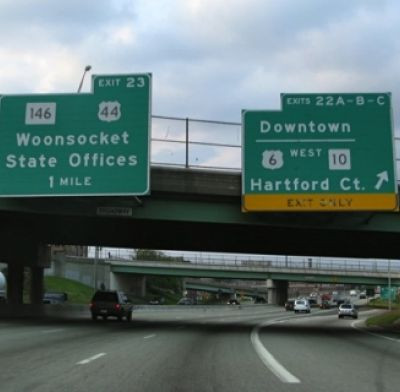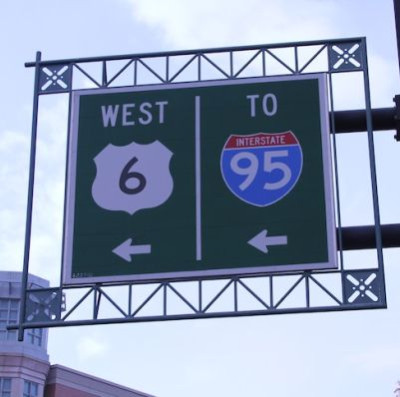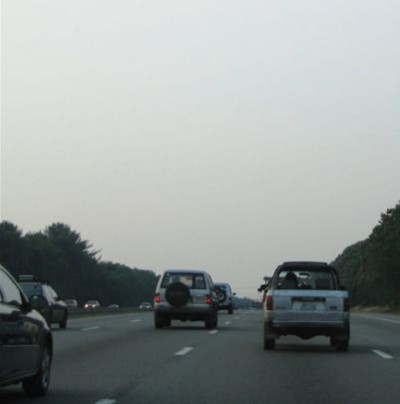Guest MINDSETTER™ Berwick: Mass Transit in Rhode Island
Sunday, December 06, 2015
Raimondo and the Rhode Island Department of Transportation are considering ways to improve mass transit in Rhode Island. A convenient and reliable mass transit system is needed in Rhode Island to encourage statewide economic development and reduce carbon emissions. To accomplish this goal, I believe that Rhode Island should form a partnership with Massachusetts to improve commuter right of ways and stations between Providence, Worcester and Boston. The track infrastructure on the Providence & Worcester (P&W) right of way between Worcester and the East Side Railroad Tunnel in Providence needs to be improved and electrified. About 7 miles of P&W track in Rhode Island would have to be elevated to avoid vehicle street crossings. A commuter rail station and a parking garage should be built at the west portal of the tunnel and a hotel and a parking garage should be built at the east portal of the tunnel.
The present commuter rolling stock, now in use in Rhode Island and Massachusetts, needs to be replaced with light weight, computer controlled rolling stock. Small, thirty passenger cars, that can be linked together when passenger loads are high, should be purchased to keep passenger fares low and reduce the wear and tear on the track infrastructure. Commuter rail traffic between Boston & Providence and between Worcester & Providence would be on separate right of ways. This separation would reduce traffic congestion on the main Amtrak right of way between Providence and Boston. The P&W commuter rail right of way from Worcester to Providence runs parallel to the new Blackstone River Valley National Park. Easy access to the new National Park’s attractions would be guaranteed when this P&W rail right of way in improved and electrified.
Personal Rapid Transit System
GET THE LATEST BREAKING NEWS HERE -- SIGN UP FOR GOLOCAL FREE DAILY EBLASTA Personal Rapid Transit (PRT) circulator mass-transit system, similar to the PRT system at London’s Heathrow Airport in the United Kingdom, should be built connecting Providence’s commuter rail stations with government offices, hospitals, colleges, shopping malls and other businesses on the East Side and in downtown Providence. Because the supporting poles and guide ways for this elevated PRT system would be light weight and unobtrusive, each guide way section could be manufactured off site during the daytime and brought to the construction site and installed at night. Construction of this PRT circulator system would be rapid with almost no disruption of normal daytime business activities. On entering a PRT station, passengers would be able to immediately board small, 4 passenger driverless PRT vehicles and be taken nonstop directly to their destination. Because PRT systems are driverless and computerized, 24 hour continuous service would be available.
Two additional elevated PRT lines should be built along the East Bay Bike Path and the William C. O’Neill Bike Path to connect Bristol and Narragansett to Rhode Island’s improved commuter rail system. The Bristol PRT line would be extended across the Mount Hope Bridge to a commuter rail station on the Old Colony & Newport Scenic Railway.The Old Colony & Newport Scenic Railway would be electrified to provide a commuter rail connection to Newport. A detailed study done by the Greenville, SC County Economic Development Corporation showed that a PRT system would attract three times the ridership of a bus rapid transit system and that fare box revenues could cover up to 96% of a PRT system’s operating cost. This would greatly reduce government subsidies. (GOOGLE GCEDC-PRT-Evaluation and read the Executive Summary)
The construction of this new commuter rail and PRT system would be the catalyst that would jump -start the building of the required infrastructure to make the new Blackstone River Valley National Park accessible to large numbers of tourists. Federal National Park funds, federal transportation funds, federal Congressional earmarks, funds from wealthy individuals and funds from Rhode Island’s charitable foundations would reduce the financial burden on Rhode Island’s taxpayers.
Once the construction of this commuter rail and PRT system is completed, the number of Rhode Islanders who commute to work in their cars would be greatly reduced. Thousands of workers from Bristol County, Newport County and Washington County would be able to get to within a few hundred feet of their workplace in Providence County at a reasonable cost. The wear and tear on Rhode Island’s local highways would be reduced and harmful carbon emissions would be lowered. The number of vehicle fender-benders, especially during snow storms, would be greatly reduced and lower vehicle insurance costs.
McCoy Stadium’s parking lot is within 1200 feet of the P&W commuter rail right of way. If McCoy Stadium was made a part of the new National Park, the National Park’s entrance, visitor’s center and museum could be located adjacent to McCoy Stadium. Visiting tourists would guarantee that the PawSox would always play to capacity crowds. Private investments in hotels, restaurants, shopping malls and theme parks would be made near the commuter rail stations from Worcester to the East Side Railroad Tunnel. Economic development in the Blackstone River Valley from Providence to Worcester would be enormous. Rhode Island’s new commuter rail and PRT mass transit system could triple the number of tourists that come to Rhode Island each year.
There would be about 35 miles of new or improved commuter rail lines and PRT lines needed in Rhode Island. At $15 million per mile, the total cost of the project would be $525 million dollars. Because there would be a lot of federal and private funds available, Rhode Island taxpayers would only have to provide $11 million dollars per year for 5 years.
Kenneth Berwick of Smithfield, RI Served three years in the United States Marine Corps from 1954-1957. Berwick is a retired teacher with a BA from RIC in 1960 and a Masters from Syracuse in 1969.
Related Slideshow: RI’s Most Dangerous Bridges
The American Road and Transportation Builders Association recently released a list of the most traveled, deficient bridges in each state. In Rhode Island, those bridges were:
Related Articles
- Guest MINDSETTER ™ Berwick: Repairing and Replacing RI’s Structurally Deficient Bridges
- Guest MINDSETTER ™ Berwick: Looking Back at Nixon’s Resignation 41 Years Ago
- Guest MINDSETTER ™ Berwick: Solving Problems Using Public and Private Relationships
- Guest MINDSETTER ™ Berwick: How to Legalize Marijuana in RI
- Guest MINDSETTER ™ Berwick: The Best Deal for RI Taxpayers is to Keep PawSox in Pawtucket
- Guest MINDSETTER ™ Berwick: A Healthcare Reform Plan That Works For Everyone
- Guest MINDSETTER ™ Berwick: Nixon’s and Obama’s Middle East Peace Strategies
- Guest MINDSETTER ™ Berwick: Tolling Not Needed
- Guest MINDSETTER ™ Berwick: The Charter School Problem
- Guest MINDSETTER ™ Berwick: A Blueprint to Improve Public School Education



